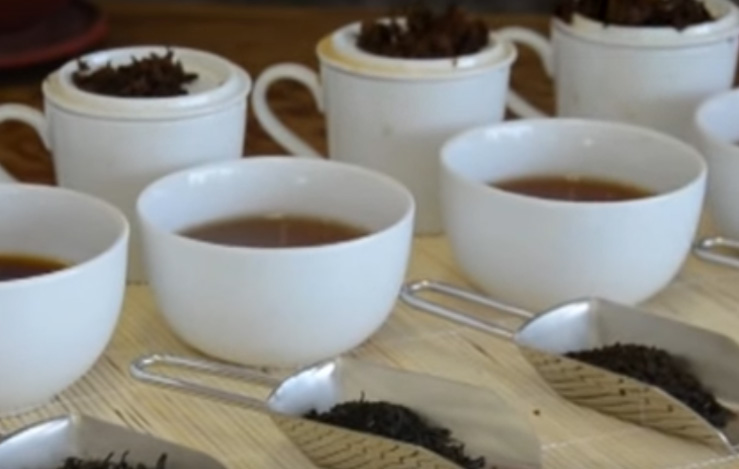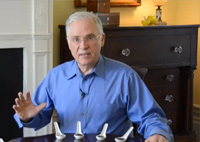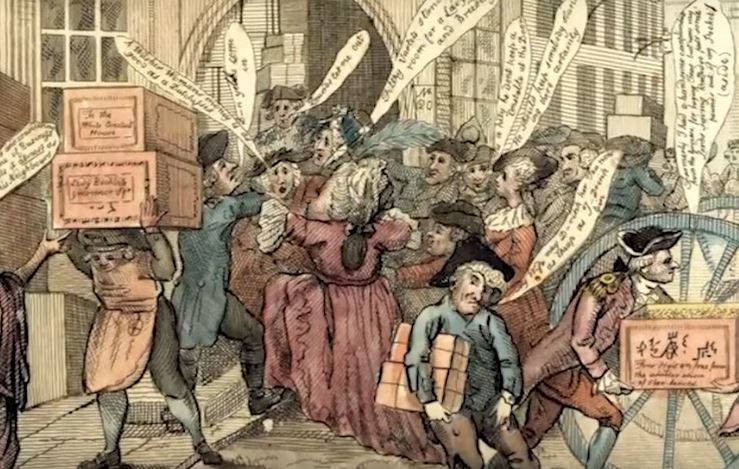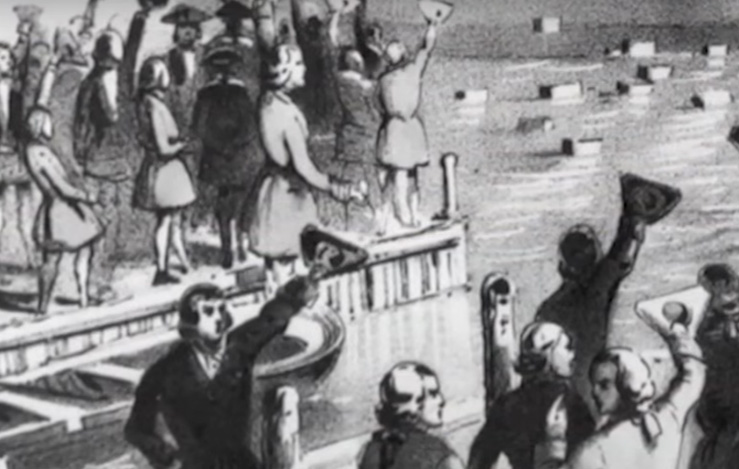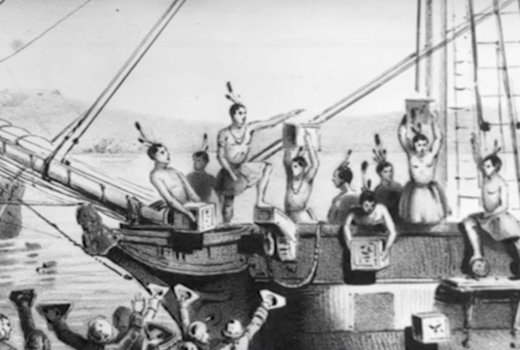How to Make Loose Tea
From the “Talking Tea with Bruce Richardson” Video Series – Episode 7
Transcript
Speaking: Teamaster Bruce Richardson
Caption text provided by Google/Youtube “Automatic Captions”*
0:00:24
i’m bruce richardson tea master for the boston tea party ships and museum
0:00:28
can you spot the dish in front of me that contains no true tea leaf?
0:00:33
if you chose this one, peppermint, you’re right.
0:00:37
peppermint is an herb. it contains no caffeine but it has none of tea’s health benefits.
0:00:43
let me introduce you today to four of the major members of the tea families
0:00:48
we begin with tea in its purest form, white tea. this is a beautiful silver needles from china. these young, unopened tea leaves were picked in the spring time placed into the sun and slowly were allowed to dry. oxidation is very very light in these teas. they produce a beautiful golden cup, very light and color but with a delicious honey after taste.
0:01:15
as we talked about before, almost twenty percent of the tea thrown over board in boston harbor was green tea from china
0:01:22
here we have a green tea from japan sencha, 25the most consumed green tea in japan today. these mechanically harvested tea leaves are put into a steamer where the enzymes are killed and this tea will forever and always stay in its green state.
0:01:40
the third family is oolong. these leaves… are picked in generally in either china or taiwan. here today i have a beautiful tieguanyin. the leaves are put into a wok where there are roasted a bit then rolled and then put back into a wok in the go through this process several times until we get this beautiful hand rolled nugget of leaf which unfurls once we put hot water again into our tea pot
0:02:13
the last family is black tea this is that the that were most acquainted with here in the western world. this example today is my morning tea that is a tippy grade assam from india
0:02:27
these teas soon as they are picked… in the gardens are allowed to wither and then they are put through huge machines that… bruise them and allow the juices of the tea leaf to open up to the air and the oxication process begins very quickly and after three or four hours the tea goes from being green to being black the it’s put into a dryer which uh… that stops the oxidation process and makes this beautiful black tea they were so well acquainted with.
0:02:55
now each one of these tea families has its own unique water temperature and we begin with white tea at no more than 165 degrees, green tea 165 to 170 degrees, oolongs 190 to 210 depending upon the grade. and the black tea as well most black teas can benefit from a pool rolling boil.
0:03:20
now how can you remember this? well just remember the uh… lighter the color of the tea the cooler the water the darker the tea the hotter of the water. if you can remember that simple rule, you’re on your way to making great tea time after time
0:03:37
well until we see you in boston go forth and make good tea
*Please note that Google/Youtube “Automatic Captions” may not have captured the content of the speaker(s) on this video accurately. Please report any errors you find on this website via the contact us form.

